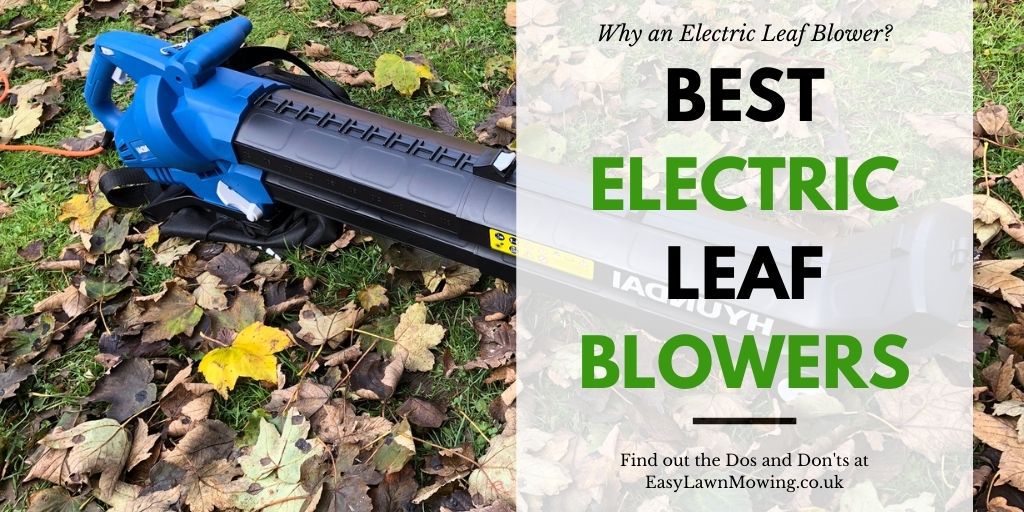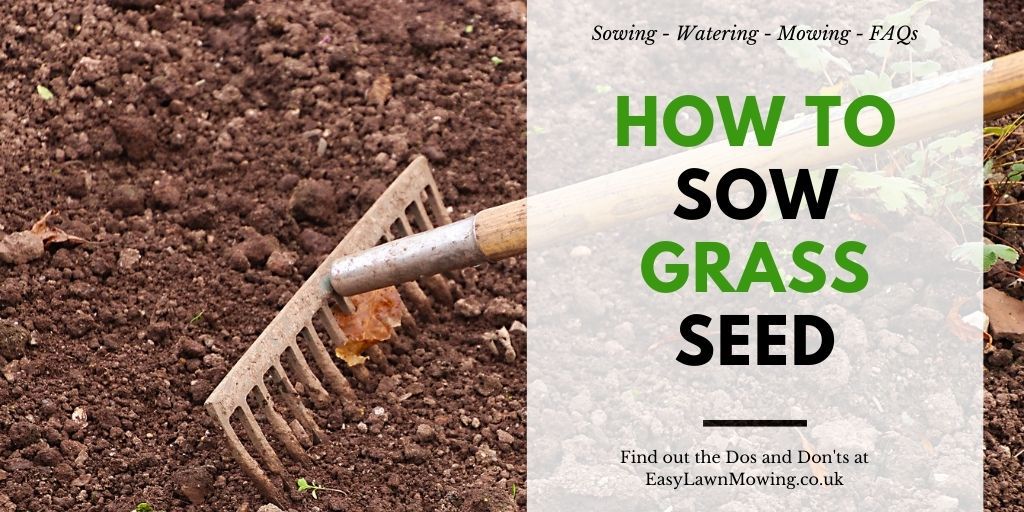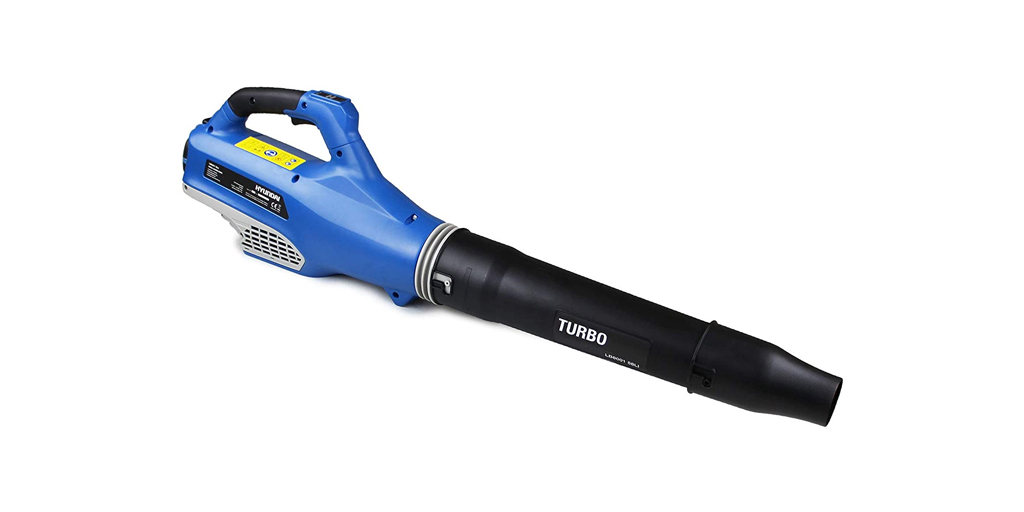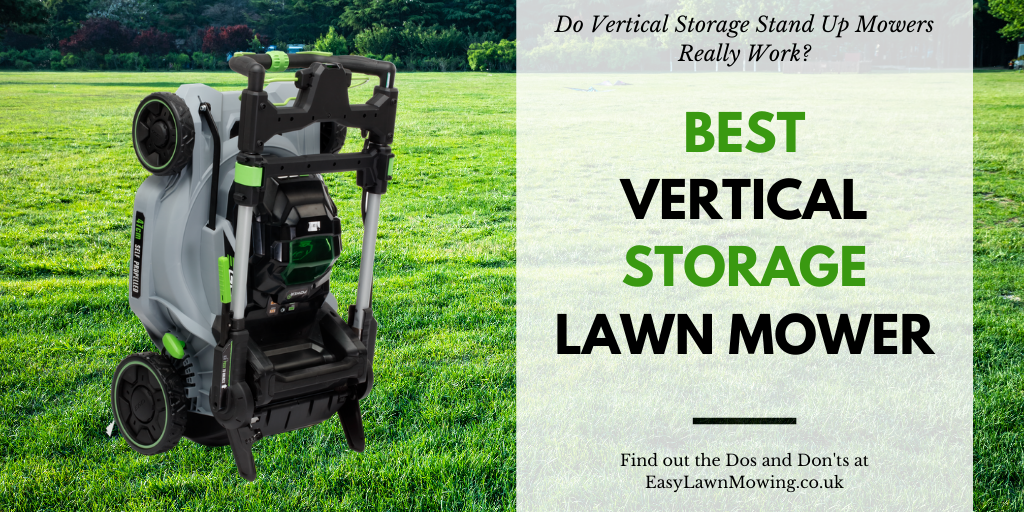Best Electric Leaf Blower And Vacuum – Buyers Guide
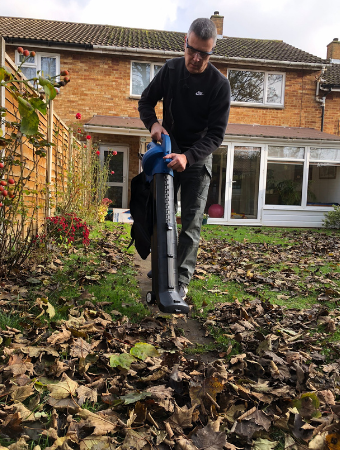
Before you can make an informed decision about which leaf blower you want, it is essential to have a good understanding of the options available and what to look out for when purchasing your next electric leaf blower. The guide and product reviews below, will ensure that you are furnished with all the information and knowledge you need to shortlist down an electric leaf blower that will be functional and serve you for many years to come. I know that some of you will not have the time and patience to research hundreds of different leaf blowers, so again to assist you I have created my own shortlist of what I believe are to be the best electric leaf blowers currently on the market. I have also further categorised them by the most popular types available.
If you are still unsure or have further questions, I am happy to help. Simply use the comments box below and I will be sure to reply and answer your query.
In A Hurry?
I understand that some of you may be pushed for time, therefore below I have included the best electric leaf blowers/vacuums split into the most popular features.
Best Electric Leaf Blower Comparison Table








Last update on 2024-04-26 / Affiliate links / Images from Amazon Product Advertising API
4 Best Electric Leaf Blower Reviews
Below I have selected and provided more information about the best electric leaf blowers. If you want to find out more and the reasons why they have been selected, please click the full review button below each blower.
1. VonHaus 3 in 1 Leaf Blower – 3000W Garden Vacuum & Mulcher Review

The VonHaus 3 IN 1 Leaf Blower is an extremely powerful and versatile garden tool. It has 3000 watts of power for great performance and can blow, mulch and vacuum. Not only does it have a shoulder strap but VonHaus has added convenient wheels to the end of the nozzle resulting in close to an effortless operation. It is lightweight at only 3.5kg, a 35 litre collection bag and a has the ability to mulch the debris at 10:1 ratio.
Main Features
This is a feature-rich model. It starts with the triple functionality that will allow you to vacuum, mulch and blow. This is practical due to the decent 3000 watts of power. It is light, compact and ergonomically designed for comfort. In addition to the shoulder strap, it also features wheels on the nozzle for added convenience. Not many blowers have this feature and many people as well as I find it extremely helpful.
It is user-friendly, has a 10-metre power cable and has a very handy flap that can be easily opened to remove any blockages.
2. Flymo PowerVac 3000 Electric Garden Blower Vac Review (9676581-01)

Flymo has a reputation for extremely light yet effective garden equipment. The Flymo PowerVac 3000 Electric Garden Blower Vac is no exception. It is reliable, easy to use and comfortable to operate. It has a powerful 3000 watt motor, a 10 metre cable, a 45 litre collection bag and has the ability to switch between a leaf blower, vacuum and mulcher for 3-in-1 functionality.
Main Features
The Flymo PowerVac 3000 Garden Blower allows you the option to vacuum, blow and mulch all in one compact yet powerful 300W unit. This makes it highly versatile. It has a 45L collection bag and is easy to use. The blower is electric and it comes with a 10M cable.
One of the outstanding features of this model is that it is super easy to use. It is light and comfortable enough for almost anyone to use with ease and the power makes it fast and effective.
3. Q Garden QGBV2500 Leaf Blower Vacuum Review

The Q Garden QGBV2500 is a multi-function garden tool that will blow, mulch and vacuum. It is powered by a 2500 watt electric motor and comes with 10 metres of cable. It is light, compact and comfortable to operate. For added convenience, there is a 45L collection bag so you can do a fair amount of work before needing to empty the bag.
What makes the Q Garden QGBV2500 so convenient is the light compact design combined with the powerful operation and multi-functions it offers. It is one of the most convenient ways to blow, shred/mulch and vacuum. It is comfortable, convenient and effective.
Another outstanding feature of this model is that it is excellent value for money. You get a lot of bang for your buck with this combo garden tool.
Main Features
The mulch, vacuum and blow functionality work well with the 2500 watt electric motor. It is light at only 4.2kg and comes with 10 metres of cable.
4. Hyundai HYBV3000E Review 3-in-1 Electric Garden Vacuum, Leaf Blower & Mulcher

The Hyundai HYBV3000E is a 3-in-1 Leaf blower, Vacuum and Mulcher that weighs only 3.3kg and is used for tidying up the garden throughout the year. The HYBV3000E has a powerful 3000W motor that has variable speeds between 8,000 and 14,000 rpm and a telescopic chute that extends from 70cm to 100cm reducing storage space. The built in mulching facility reduces the foliage and grass by ratio of 1/10th of its original size making it suitable for composting.
Main Features
The Hyundai HYBV3000E has a powerful 3000W motor that is more than adequate to tackle the toughest conditions fast and efficiently. The motor speed can be adjusted between 8,000 and 14,000 rpm depending on the conditions allowing the airspeed to be controlled between 62 and 186mph.
What Makes a Good Electric Leaf Blower / Vacuum?
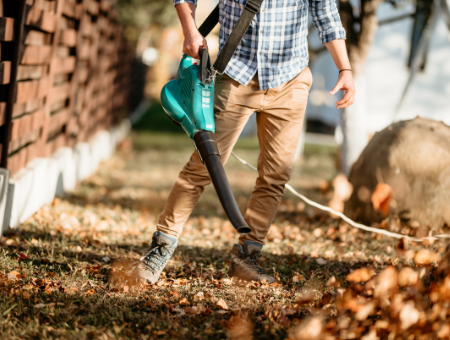
An electric leaf blower or vacuum is a powered device that is used to extract or remove leaves and other debris from the garden. A leaf blower will output a jet of air which can be used to direct the debris into one pile for far easier clean-up, whereas a leaf vacuum will use a jet of inward air to suck and mulch the leaves into the attached collection bag.
There are a variety of models, each powered in a different way; most commonly you will find petrol, battery or electric leaf blowers. However, in this article, we are going to be looking at the electric version, which connects to the mains via a power cable giving you continuous power. This is ideal for larger gardens where battery power might not last long enough on a single charge or higher air speeds and air flow rates are required.
In the main, there are three types of electric tools in this category – leaf blowers, leaf vacuums or a 2-in-1 versions that features both. However, it is worth remembering that switching from blowing to suction can be quite tricky and if you are lucky enough to find a model where the process is relatively simple, you may find that you lose some power. For this reason, it is essential to familiarise yourself with the tool and its features, so that you can use it more easily and efficiently.
That being said, there are many advantages to the electric leaf blower, as already mentioned, they offer continuous and higher power, but are also relatively inexpensive to buy.
Out of all the different types of power, the electric model is by far the cheapest with some decent products being sold for as little as £50.
What’s The Difference Between A Leaf Blower And A Leaf Vacuum?
As we have discussed, a leaf blower will move leaves and debris into a convenient pile for a more straightforward clean-up, whereas a vacuum will suck the leaves into a collection bag.
This is the main difference, and in truth, a leaf blower is far easier and quicker to use, but a vacuum has the added advantage of not having to pick up the leaves manually.
Many people opt to purchase a 2-in-1 leaf blower vacuum, which allows you to do both tasks depending on your needs that day.
When Would You Use A Leaf Blower Or Leaf Vacuum?

Having the option to switch between a blower and a vacuum is hugely convenient, but knowing when to use each function can prove to be a little more tricky.
- If there isn’t a lot of debris to clear and the task will be relatively quick, a leaf blower should be your go-to tool.
- Since the debris will be collected inside the power tool, a leaf vacuum may not be suitable for collecting wet debris; in this instance, you would use the leaf blower.
- More expansive spaces that have a clear area for piling the debris are ideal for using a leaf blower.
- If you need to access a narrow space, a leaf vacuum will prove invaluable.
- For those who want to use the fallen leaves as mulch, your leaf vacuum will shred them, allowing you to put them to good use (the mulching ratio varies between models, but the volume will be hugely reduced).
- If you are trying to get rid of pests, a leaf vacuum is a very handy tool.
- When you do not have time to collect leaves and debris manually, your leaf vacuum will be the best choice.
Things To Consider Before Purchasing An Electric Leaf Blower Vacuum
Before you part with any of your hard-earned cash, it is essential to look at what you need from your equipment. There is little point in buying a tool that won’t be up to the challenge. However, there are a few questions you can ask yourself before you get started, that will help you determine what would be the best option for you.
If you have considered buying an electric leaf blower vacuum, you might want to ask yourself the following questions.
- What job are you looking to do? – If you want to move a few leaves from the garden, you may only need a leaf blower and not a 2-in-1 tool. In contrast, if you want to tackle a wide range of jobs, you may benefit from a leaf blower combined with a vacuum facility.
- How big is your garden? – The size of your garden will determine the type of leaf blower vacuum you need. As a rule of thumb, anything under 1500 square metres will require a 3000w electric leaf blower vacuum. Also you will need to consider the size of your collection bag volume, you should be looking for a bag around 40 L but this will depend on the mulching ratio. Speaking in mulching ratios, again you should be looking for something at least 10:1. Also don’t forget to check the length of the power lead, however this tends to be pretty much standard at 10 metres.
- How heavy should the leaf blower vacuum be? – One of the most important considerations is the weight of the machine. If you struggle to carry heavy weights, then it is vital to look for a lightweight tool with a shoulder strap. This is why electric models are preferable since a petrol leaf blower would be far heavier owing to the addition of the bulky petrol engine.
- How much noise does it produce? – Petrol leaf blower vacuums are notoriously noisy, much like any petrol-powered garden tool and so an electric version is a great choice if you do not want something that hits too high decibels. Regardless of the power type, your leaf blower will kick out some sound, so it is essential to wear the correct protective ear equipment.
What To Look For In An Electric Leaf Blower Vacuum
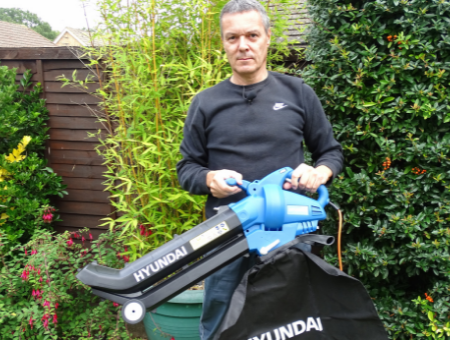
If you have never purchased a leaf blower vacuum before, it can feel pretty confronting when you see the range of features and considerations. However, it doesn’t need to be a complicated process, and our buying guide will point you in the right direction for finding a suitable piece of equipment for you.
Electric Leaf Blower Power, Air Flow & Air Speed
So without going into too much into the science about air flow and air speed, it’s good to have a general understanding about what these mean and how they may influence your purchasing decision.
Air speed is measured in either miles per hour (mph) or kilometres per hour (km/h) and is an indication of the maximum speed of the air the leaf blower can produce.
Air flow rate is measured in CFM (cubic feet per minute) and is an indication of how much air passes through the nozzle.
Together, these two measurements will indicate the power of the air delivered from the electric leaf blower, and therefore how suitable it is for a particular task. For example, if you are looking to move heavier debris then you will need an electric leaf blower with a higher air flow rate to achieve this.
Just remember that if your electric leaf blower also has a vacuum function, this will be displayed in the product specifications as the “Suction Capacity” as litres per second (l/s).
For example, the Flymo PowerVac 3000V Electric Blower has an impressive maximum air blow speed of 192mph (310 km/h) delivered via its 3000W motor. Comparing this to a more budget friendly model like the The Handy THEV2600 Electric 3 in 1 Leaf Blower with its 2600W motor, delivering a lower air speed of 167mph (260km/h).
Nozzle
There are several excellent electric leaf blower vacuums that come with a range of attachments allowing you to tackle a more diverse selection of jobs – but we will look at that in a little more detail later on.
In the main, your electric leaf blower will come with a standard nozzle, and this can impact both its power and performance. If you have a flat nozzle, this is ideal for suction and can deliver an incredible and significant amount of energy for sucking leaves and debris into the machine effortlessly.
In contrast, if you are blowing, you will want to look for the most narrow nozzle you can find. This concentrates the stream of air, giving you far more control over the process. Imagine trying to direct leaves and debris into a pile with a broad jet of air – it would get very messy, very quickly.
So for example, if we take the ever popular Bosch Electric Leaf Blower and Vacuum UniversalGardenTidy 3000, you will get two chutes supplied. The first is a narrow design used for leaf blowing and the second has a much wider chute design for vacuuming leaves and other debris around the garden. Having the option to switch between the two modes provides a more versatile tool to tackle a number of jobs around the garden.
Blades
Now, it is important to point out that an electric leaf blower alone will not have blades since it doesn’t need them, but when you buy a 2-in-1 tool or a leaf vacuum alone, this will have internal blades that will shred the leaves, so that you can use them as mulch.
One of the first things you should look for is robust blades. This type of equipment will usually feature either plastic or metal blades. There is no doubt in my mind, that metal should always be your go-to option.
Metal blades are much more durable and will stand the test of time. Furthermore, if a solid piece of debris like a small stone should get sucked into the machine, this would have far less of a damaging effect on metal blades than it would on plastic. Metal is much more hard wearing and will provide a sharper cut for a longer period.
As well as the material from which the blades are made, you will want to make sure that they are easily accessible. Should you have just discovered that there is an unwanted debris sucked up into the machine, it may cause a blockage. In this case, you will want to be able to access the blades to remove the blockage and get on with the job.
Of course, if you do need to unblock the blades, for safety reasons, you should ensure that the device is disconnected from the power source.
The only purpose of the blades is to mulch the debris into much smaller pieces. The benefits are twofold, not only will you be able to vacuum far more before having to empty the collection bag, but also the mulched cuttings are perfect to be added to the compost bin, where they will decompose far quicker.
Mulching ratios can vary considerably between models and brands. For example, the Flymo PowerVac 3000V has an excellent 16:1 shredding ratio. In comparison, the VonHaus 3000W 3 in 1 Leaf Blower has a much lower mulching ratio of just 10:1, so watch out for this specification if this is an important feature for you.
Collection Bag
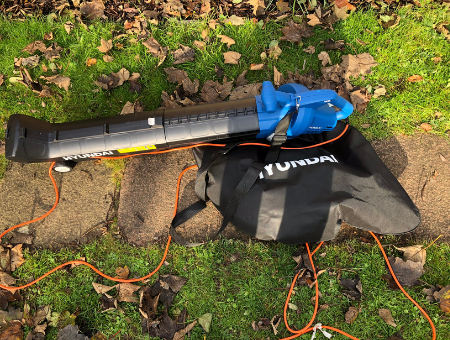
There are electric leaf blower vacuums that will come with a collection bag that is not waterproof, and this can cause issues with leaking – although you should err on the side of caution when attempting to collect wet debris and only do so if the manufacturer suggests that this is OK.
Furthermore, you will want to look at the size of the collection bag; how large it needs to be can be determined by the size of your garden.
In the main, the collection bags on these pieces of equipment can be anywhere between 30 and 50 litres. While you will want to make sure that the collection bag is large enough, you will not want something that is so big that you struggle to carry it around when getting full.
Most collection bags can be detached not just for emptying, but also when just using the leaf blower function.
Some cheaper leaf blowers I have tested, have a problem with the way they open and close for emptying. Some zips kept working their way open whilst in use, blowing the mulched content all over the garden again.
As mentioned above, the content of the collection bag can be added to your compost bin and is very beneficial. As the leaves have already been mulched into small pieces, they break down more quickly and will contribute to your organic lawn maintenance armoury.
Storing Electric Leaf Blowers
Electric leaf blower vacuums are decent-sized pieces of equipment, so it is crucial that you have adequate storage space. But of course, not everyone does, so if the garden shed is looking slightly full, it might be worth finding a leaf blower vacuum that will come apart for easier storage.
Some electric leaf blowers, such as the Hyundai 3000W Electric 3-in-1 Leaf Blower, have an extending chute that can be collapsed when not in use to reduce storage. There is also a pull-out plastic tab on the Hyundai, to allow the blower to be hung easily on the wall.
The Flymo PowerVac 3000V Electric Blower has a chute that splits into two pieces, again a great space saving feature.
Variable Speed Electric Leaf Blowers
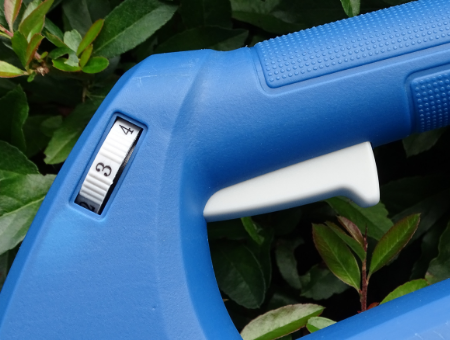
Some of the most basic electric leaf blower vacuums will come with two speed settings, but there are others that are far more sophisticated.
Depending on the type of ground you are working on and the level of debris, you might need to alter the speed setting to prevent larger pieces of debris entering the machine.
How complex your needs are, and the type of work you would like to do with the tool, will have an impact on the number of speed settings you will need.
Attachments
I mentioned earlier that some electric leaf blower vacuums come with multiple attachments and these allow you to tackle a variety of jobs.
Most commonly, you will find a gutter attachment, which, as its name may suggest, will allow you to reach up and clear the gutter. There are other tools that will feature attachments for getting around inaccessible corners and other jobs.
It must be said, that there seems to be more attachments available on cordless leaf blowers when compared to electric powered ones. This is most probably down to the fact that electric leaf blowers/vacuums are designed for more heavy duties around the garden thanks to their superior power, air flow and speed rates.
Conclusion
Firstly you will need to decide whether you want to purchase an electric leaf blower, a leaf vacuum or a 2-in-1 tool offering both options.
Electric leaf blower vacuums are 2-in-1 tools that can both suck up leaves and other debris as well as blow them into a neat pile ready for you to manually remove them.
Leaving leaves in your garden will damage your lawn, as it will be starved of light and air. Using leaf vacuum or blower will assist in keeping your lawn clear and should be part of everybody’s Autumn Lawn Care schedule.
In general, leaf blowers can be powered in many ways, but electric leaf blower vacuums are often the most cost-effective, deliver good power and are easy to use.
Before you commit to purchasing any particular model, it is important to look at your needs as well as assessing the features of the tool to ensure best fit and compatibility with your personal requirements.
Electric Leaf Blower FAQs
Is An Electric Leaf Blower Worth It?
If you are a domestic user with casual needs, then an electric leaf blower is well worth considering. They are ideal for smaller areas where there aren’t huge piles of leaves. However, if you have a large garden with a lot of debris to clear, you may find that a more powerful petrol leaf blower is the right choice for you.
Are Electric Leaf Blowers Powerful?
Electric leaf blowers are not as powerful as their petrol counterparts. However, they often don’t need to be since they are used for different types of tasks. For example, an electric leaf blower is better suited to more lightweight jobs and in this case, would be more than powerful enough.
What Is A Good MPH For A Leaf Blower?
When choosing an electric leaf blower, you will need to think about the speed at which the air leaves the device. Generally speaking, the most effective leaf blowers have a speed of around 190mph. If you go too low, the leaf blower won’t be as effective at clearing debris but if the speed is too high, it can be all too easy to lose control of the leaves.
Are Electric Leaf Blowers Quieter Than Petrol?
Yes. An electric leaf blower is not as noisy as a petrol model owing to the lack of the petrol engine. However, how much noise your electric leaf blower puts out will depend on the model. Some are quite noisy while others are designed to be quieter, be sure to check out the number of decibels before buying. Anything under 70 dB is considered to be a quieter model.
How Many CFM Is Good For A Leaf Blower?
When you buy an electric leaf blower, you will need to check out the CFM rating. This tells you how much air passes through the leaf blower nozzle in one minute. Typically, a good electric leaf blower will be between 200 and 400 CFM. That said, if you’re working in a larger area then you may need something more powerful; perhaps up to 700 CFM.
Are Electric Leaf Blowers Good For The Environment?
When we think about the use of power, an electric leaf blower will use quite a bit so from this point of view, they’re not a great tool to choose if you’re looking to conserve energy. However, where it is needed, an electric leaf blower is far better for the environment as it does not put out harmful fumes like a petrol model, meaning less pollution.
What Can I Use Instead Of A Leaf Blower?
If you’re concerned about using energy where you might not need to, then there are manual alternatives to the electric leaf blower. Typically speaking, this involves using a rake and broom, but it’s worth keeping in mind that this can be laborious and physically hard work, especially in a larger garden. Also bear in mind that a leaf blower will mulch the leaves, meaning that it will take up less space in the garden waste bin and will break down quicker on the compost heap.
What Should I Look For In An Electric Leaf Blower?
There are several things you will need to look for when choosing an electric leaf blower. The most important are the CFM and MPH as this tells you a lot about the power. You can find out more about this in my detailed guide above. However, also check out other features such as the collection bag size, what attachments the leaf blower comes with and whether it doubles up as a leaf vacuum among other things.
Can You Use An Electric Leaf Blower For Snow?
It might be tempting to use your electric leaf blower to clear snow from a driveway or footpath. However, this is not a wise idea. Water and electricity do not mix so this is certainly not the right tool for the job. You can use a gas leaf blower to clear snow but only light snowfall that is dry and powdery. Never use any type of leaf blower for heavy, wet or slushy snow.
As a seasoned expert in the field of garden power tools, I have dedicated over a decade to working with and reviewing a wide variety of lawn mowers. My extensive experience has allowed me to gain a deep understanding of the benefits and limitations of different types of mowers and garden tools.
Over the years, I have honed my skills in writing informative articles and creating helpful videos for various blogs and publications. This has given me the ability to not only recognise what makes a good lawn mower, but also to help you choose the perfect garden tool for your specific needs and requirements.
With my wealth of knowledge and expertise, I am confident that I can provide you with valuable insights and recommendations when it comes to selecting the right lawn mower for your lawn. So, whether you're looking for a battery cordless, electric, petrol, or robotic mower, you can trust in my expertise to guide you towards the best option for your garden.

